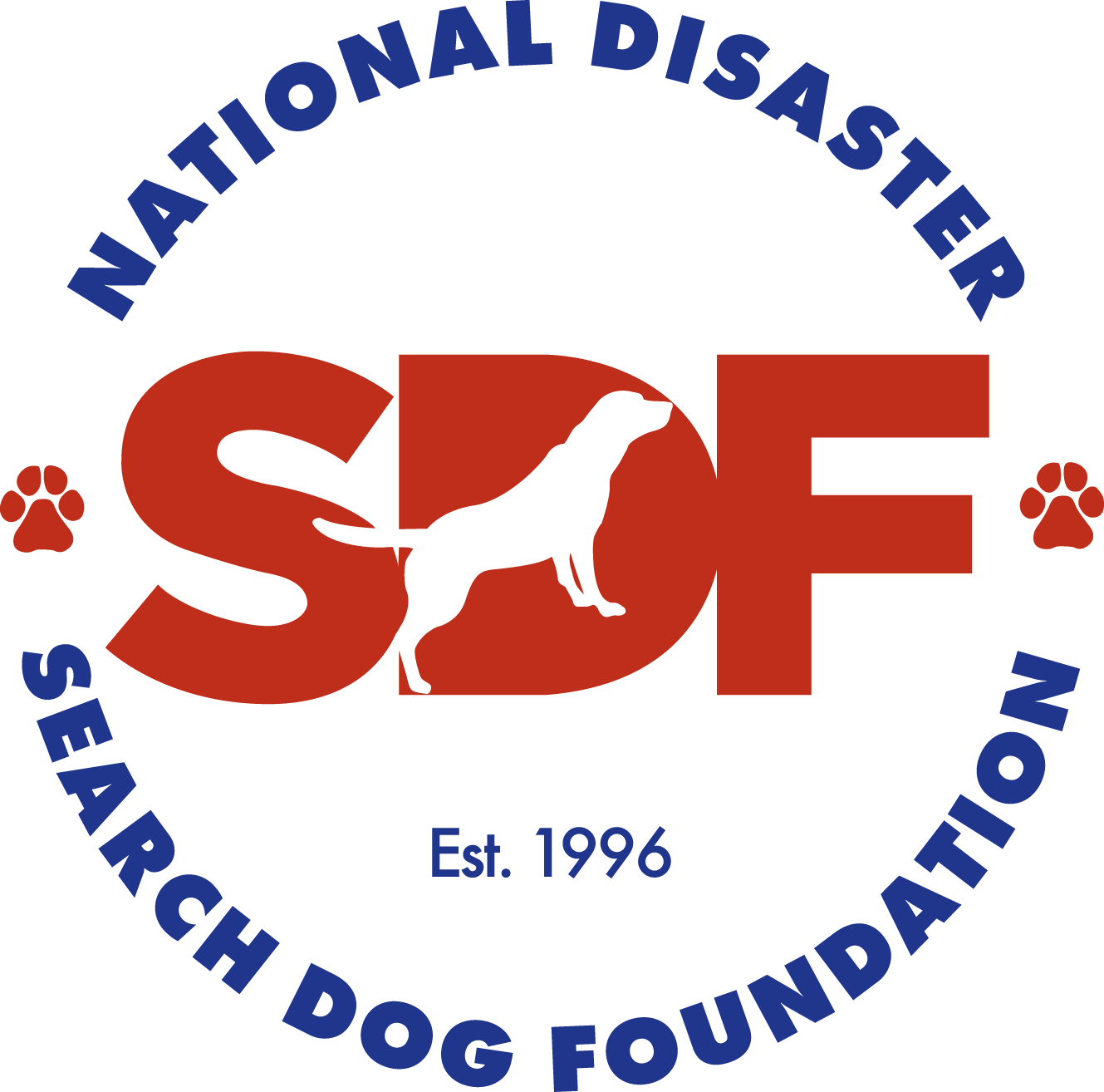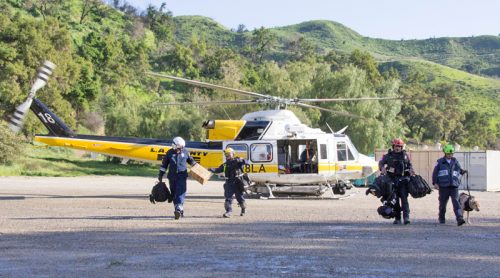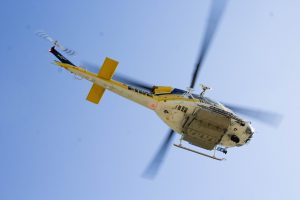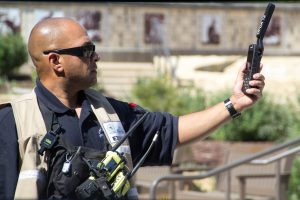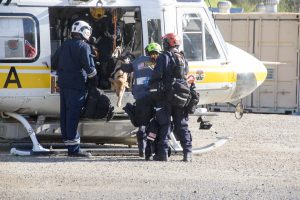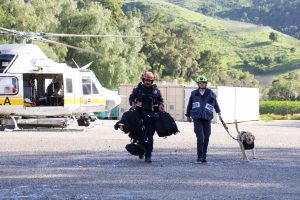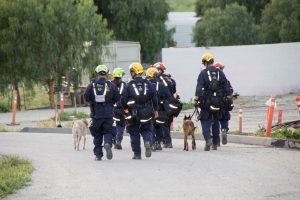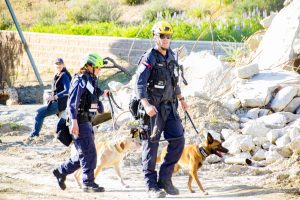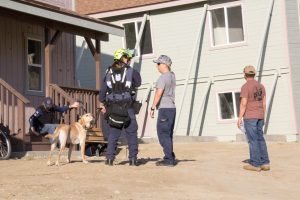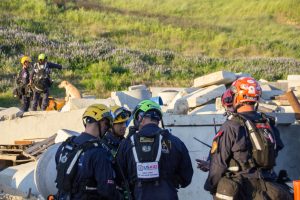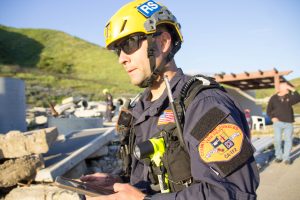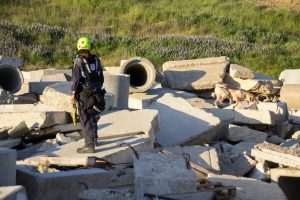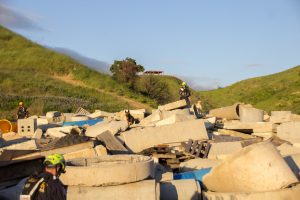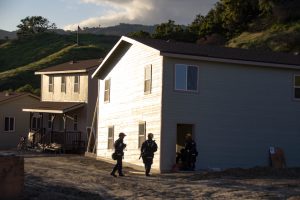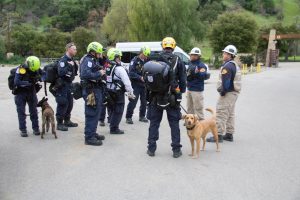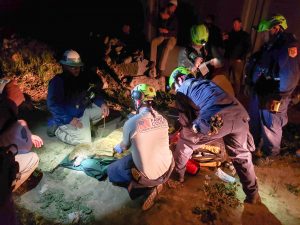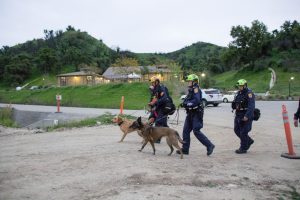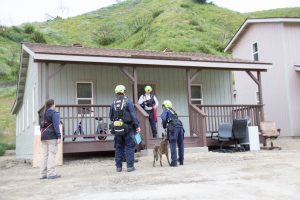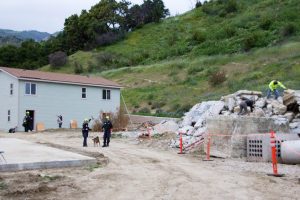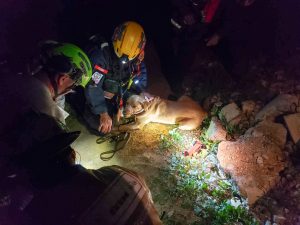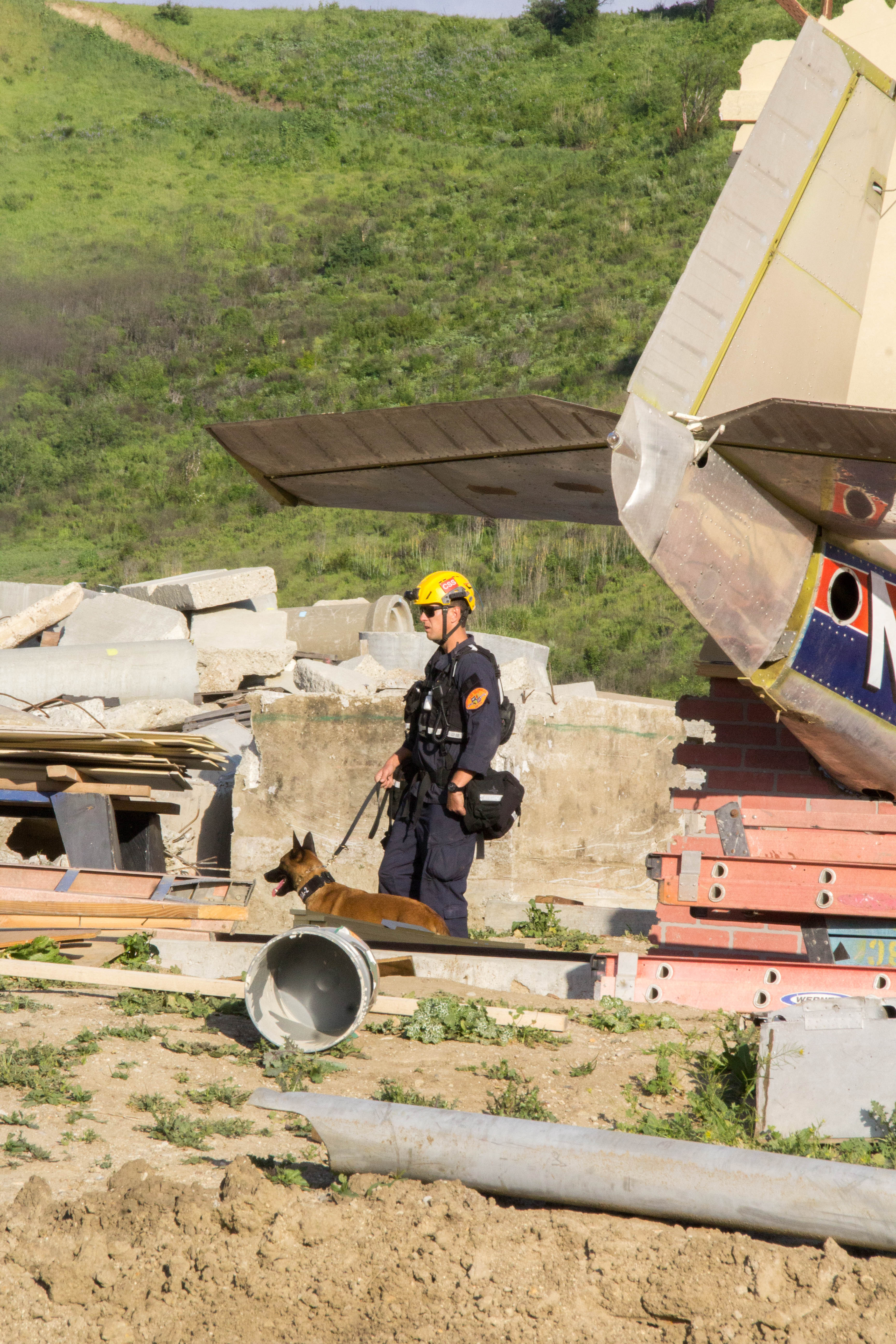 On Tuesday, April 2, urban search and rescue task forces from Fairfax, VA and Los Angeles, CA kicked off a joint four-day field training exercise across Los Angeles and Ventura Counties. This training focused on deployment readiness for the teams, dubbed USA-1 and USA-2 when deployed internationally by the Office of Foreign Disaster Assistance (OFDA), ensuring that all areas of expertise within the task forces, from logistics and medical care to structural engineering and canine search, are mission-ready after disasters strike around the globe.
On Tuesday, April 2, urban search and rescue task forces from Fairfax, VA and Los Angeles, CA kicked off a joint four-day field training exercise across Los Angeles and Ventura Counties. This training focused on deployment readiness for the teams, dubbed USA-1 and USA-2 when deployed internationally by the Office of Foreign Disaster Assistance (OFDA), ensuring that all areas of expertise within the task forces, from logistics and medical care to structural engineering and canine search, are mission-ready after disasters strike around the globe.
On April 2nd, teams arrived at SDF’s National Training Center (NTC) aboard a Blackhawk helicopter, piloted by a Los Angeles County Fire flight crew. Unloading from the helicopter in two separate groups amid a cloud of dust, there was an air of excitement as both humans and canines prepared to go to work during their mock disaster scenario – an earthquake that struck the island of San Felipe.
What the arriving teams did not know was that in order to prepare them for a real-life deployment, members of USA-2 had designed a scenario that would have them searching in the dark and needing to bed down on our campus overnight with only the supplies and equipment they brought in their packs. This realistic situation has happened during past deployments and served as a stark reminder that all members of a task force must be prepared to sustain 24 hours separated from the rest of their task force, which includes crucial items such as medical supplies, and food and water for themselves and their canine partners.
As they walked further onto SDF’s NTC campus, volunteer “victims” played the dramatic roles of injured civilians, a concerned mother who lost a child, and people who do not speak English but are frantically pleading with the search teams to find his loved ones buried in the rubble.
This added chaos heightened the stress level of the teams and challenged them to make sound decisions about their search strategies while under pressure.
As night fell, the task forces began to use the canine teams to comb rubble piles, search through buildings and check the train wreck and collapsed freeway props as though they were actual disaster zones. With a lot of ground to cover and exhaustion setting in, exercise organizers threw the teams another challenge – a fictitious canine injury scenario in which a search dog had sustained a laceration to its leg that needed immediate medical attention.
The teams’ medical specialists were called upon to assess and care for the canine mannequin and all was well as the teams bedded down for the night in a vacant building in our “Search City.”
The next morning, reinforcements arrived in the form of vans, driving the teams out of “San Felipe” and back to their Base of Operations, where they met up with the remainder of their task force. This scenario at the NTC played out two nights in a row with different teams arriving each night, giving the humans and canines the most realistic deployment experience possible.
This field training exercise gave task force leaders the opportunity to challenge their members with real-world lessons learned when they were deployed to Haiti in 2010, Japan in 2011, Nepal in 2015 and Mexico in 2017. The exercise provided difficult problems that search teams worked through as a cohesive unit and gave them practical, hands-on experiences that they can use on future deployments.
SDF is proud to have been a small part of this OFDA exercise. Hosting trainings like this are one more way we can help enrich the learning of not only SDF-trained Canine Disaster Search Teams, but all task force members who are part of the larger disaster response network in this country. Our thanks to OFDA, Los Angeles County Fire and Fairfax County Fire for allowing SDF to be a part of this experience, and we look forward to the next time we see these teams out at the NTC!
